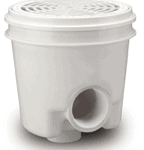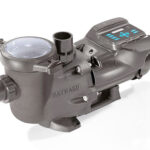This guide will teach you how to choose the right location for a pool, ensuring that you get the most out of your investment. Learn about the different factors to consider when choosing a pool location and type.
Blue water shimmering in the sun is sure to be a focal point, so you probably want to plan your pool’s location to be viewable from as many places inside and outside as possible.
There are a number of software programs to help homeowners develop plans for a pool tailored to the landscape and to the family’s preferences. It’s a good idea to draw up a few rough sketches as a way to think through the details. Issues to consider include:
Budget
Fiberglass pools are durable and fairly expensive; they come in preset shapes and sizes. For a free-form pool, vinyl-lined pools are the inexpensive option and concrete pools the more expensive option. All three types have pluses and minuses, so you’ll want to ask around what works well in your region.
Sun, Noise & Privacy
Do you want the pool to be entirely in the sun, or would you like it to have some shade at any given time of the day? What about the area around the pool? Most people like at least a little shade. A table with an umbrella is a classic option, but for a more upscale feel, consider a pergola or an arbor.
Where should the pool be situated so that bathers and visitors will be comfortable with the level of privacy and noise? Perhaps the area around the pool needs to be modified or landscaped to address these issues. A vine-covered fence can enhance privacy, and a small water feature can help muffle traffic and other neighborhood noise.
Space & Usage
Often people will spend more time relaxing by the edge of the pool than they will in the water. Surrounding the pool with a patio or deck will make it easy to access the pool and minimize the amount of dirt that gets into the water. As you plan the surrounding area, factor in space for lounge chairs—an area 5 to 8 feet wide for each is usually recommended.
It’s also nice if access to the pool is fairly convenient to doors leading from the house, particularly from the kitchen. Plan for traffic paths that are wide enough for comfortable comings and goings. Sliding doors or French doors are popular options.
Some people like to use their pool for swimming laps; for this, a long, straight shape works best. If your pool is purely for recreational purposes, any shape will work; these pools usually have a large shallow area. Some homeowners combine the two types of pool with a variation on the L-shape.
Pool Features
If you would like to add a diving board or slide, be sure to consult with local codes and a building contractor because most regions have very specific regulations concerning pool depth and “envelope size.”
If you have small children, a wading area is nice, though they will soon outgrow it. Some people build a small wading area that can later be converted into a spa when children are older.
If you’d like the pool area to feel like a visit to a resort, add a few luxury touches such as massage jets, built-in seats in the water, or mosaic-tile trim.
Around the edge of the pool, consider a beverage center, a water feature, some lush potted plants, cushy lounge chairs, and some fun lights for nighttime swimming. If money is no issue, you might also consider the addition of an outdoor kitchen.













 Don Vandervort writes or edits every article at HomeTips. Don has:
Don Vandervort writes or edits every article at HomeTips. Don has:




